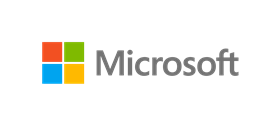Dr Umang Patel emphasises that with AI, we stand at the start-line of a new professional era for clinicians
You will know this already; it is a well-worn fact. Surgeons started out as barbers.
You might have pointed out to friends that the emblematic red and white pole signifies the clean and blood-soaked cloths dating back to medieval times when you could just as easily pop in to get your beard trimmed as having a foot amputated.
I was reflecting on this whilst I sat in my barber’s chair, and it got me thinking. How did it start? Was it a good or a bad thing? Is there anything we could learn from it to help us with the challenges we face today?
Sponsored by
It started simply enough. Curious barbers realised they had the tools and steady co-ordination which uniquely positioned them to take on minor surgery and relieve pain. They might not have had a whole lot of training, but as they honed their craft, they collectively got better. Barber-surgeons could remove a painful tooth, incise, and drain infected collections and remove gangrenous limbs.
Imagine introducing that breadth and range of services to cover modern day ailments to every high street. Assuming safety and mortality were brought up to standard, there would not be a backlog.
This leads me to my main point: Are any new tools available today? Which, if given to people with the right expertise and experience, would help the NHS?
One, instantly, springs to mind. Artificial Intelligence. Viewed as a simple tool, it is like a scalpel or blade. It allows the person wielding it to cut through things. Admittedly not skin, but processes and data. With careful application, AI can be used to peel back the stuff that is in the way and let us get to the exact bit that is causing the pain.
For example, at Northumbria Healthcare Foundation Trust, two surgeons are applying data science and machine learning to historical data on operating outcomes to produce individualised patient risk profiles. Put simply, Professor Mike Reed and Dr Justin Green, have found a way to cut through their backlog whilst improving patient safety and choice.
If you live in Northumbria and need hip or knee replacement, you are less likely to suffer a complication as your risk has been assessed against 220 data points which will result in you being operated on in the right place, at the right time. Flow is better, care costs are lower, and you will be home quicker.
Today, you do not need to be a full-time data scientist to be able to understand and use these innovations. Services like Azure Machine Learning are accessible through your laptop with safe environments to test ideas in and free training available to anyone with an NHS email account.
With more data than ever before, we stand at the start-line of a new professional era for clinicians
Making the tools is one thing, but at Microsoft we also accept that we have a responsibility to provide an infrastructure to support their use and development. The Responsible AI Framework sets out the policies and compliance standards that underpin the training and testing of these tools. This infrastructure allows the clinicians in Northumbria to run Responsible AI dashboard in parallel. This flags any cases where the result might be affected by demographic bias or other factors where the training data could lead to an individual patient suffering or being put on the wrong pathway.
In Cambridge, the InnerEye project is saving Dr Raj Jena and his colleague’s valuable time by using AI to speed up cancer treatment. Used in this example, AI is less like a scalpel, more like another set of eyes which automatically highlight tumours on patient scans. The InnerEye Deep Learning Toolkit is available opensource, meaning that this innovation can be used freely, adapted, and enhanced through the collaboration of doctors globally.
These tools are available today. So, if you come across a clinical workload that you think could be tackled more effectively with their use, please do stay curious – like those medieval barbers – and reach out. We can help you get started.
With more data than ever before, computing power that is mind blowing as well as accessible, we stand at the start-line of a new professional era for clinicians, and I cannot wait to see the developments and share the patient success stories.
To find out more information, visit our website.




























